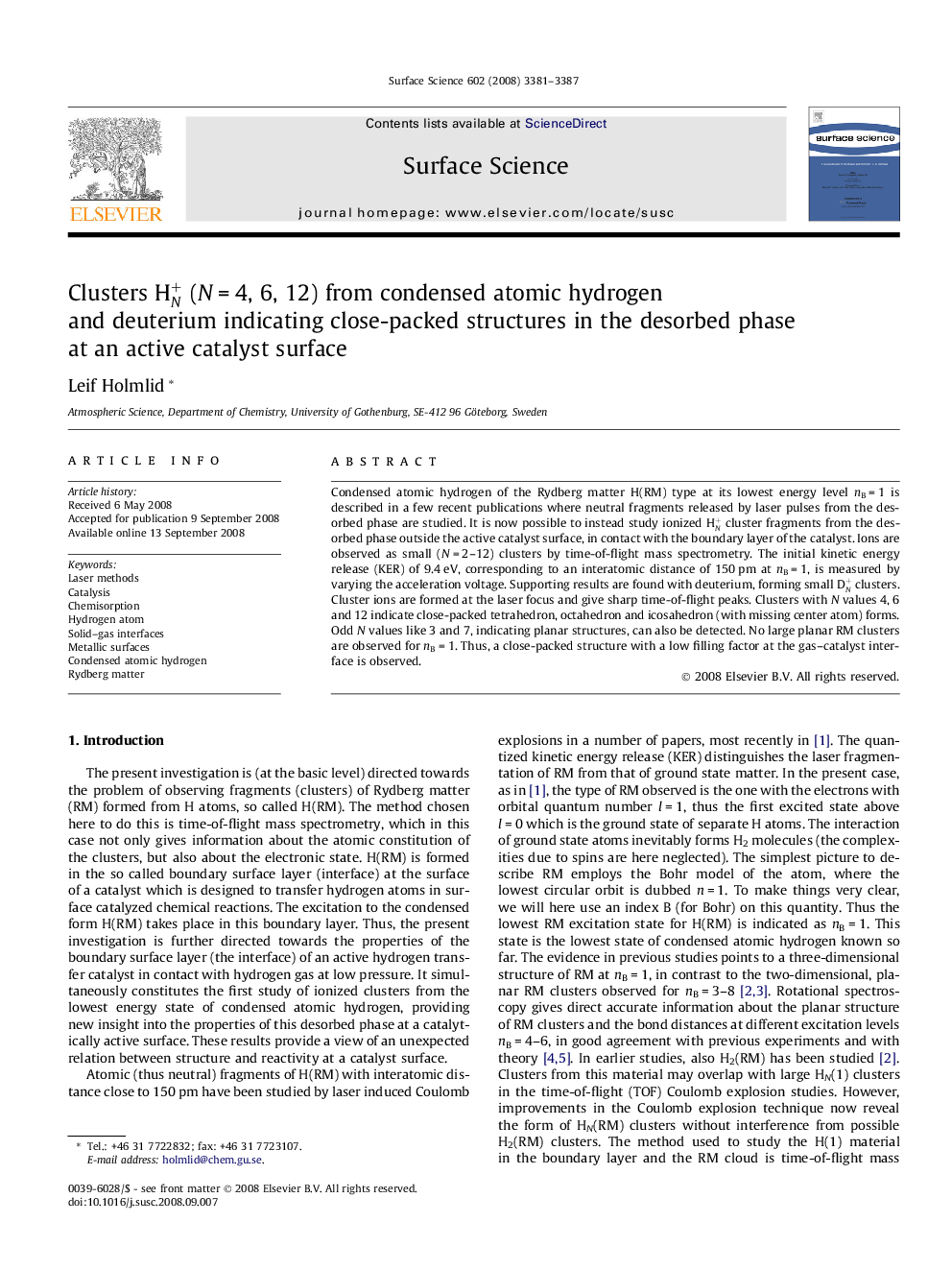| Article ID | Journal | Published Year | Pages | File Type |
|---|---|---|---|---|
| 5424615 | Surface Science | 2008 | 7 Pages |
Condensed atomic hydrogen of the Rydberg matter H(RM) type at its lowest energy level nBÂ =Â 1 is described in a few recent publications where neutral fragments released by laser pulses from the desorbed phase are studied. It is now possible to instead study ionized HN+ cluster fragments from the desorbed phase outside the active catalyst surface, in contact with the boundary layer of the catalyst. Ions are observed as small (NÂ =Â 2-12) clusters by time-of-flight mass spectrometry. The initial kinetic energy release (KER) of 9.4Â eV, corresponding to an interatomic distance of 150Â pm at nBÂ =Â 1, is measured by varying the acceleration voltage. Supporting results are found with deuterium, forming small DN+ clusters. Cluster ions are formed at the laser focus and give sharp time-of-flight peaks. Clusters with N values 4, 6 and 12 indicate close-packed tetrahedron, octahedron and icosahedron (with missing center atom) forms. Odd N values like 3 and 7, indicating planar structures, can also be detected. No large planar RM clusters are observed for nBÂ =Â 1. Thus, a close-packed structure with a low filling factor at the gas-catalyst interface is observed.
